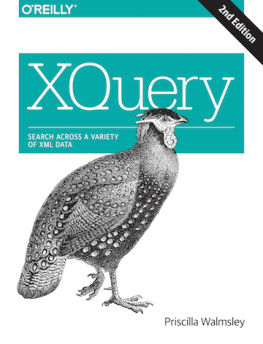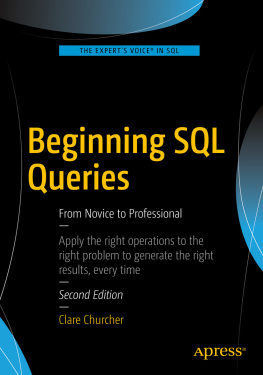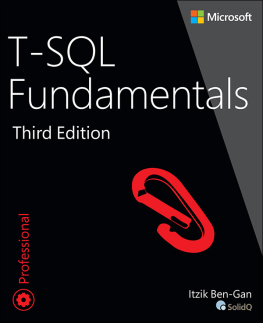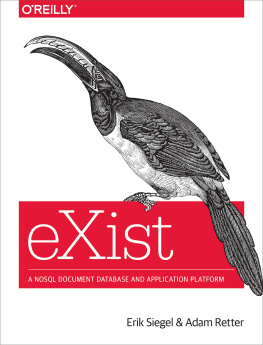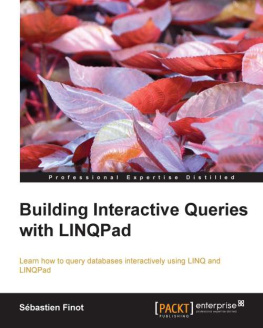Priscilla Walmsley - XQuery: Search Across a Variety of XML Data
Here you can read online Priscilla Walmsley - XQuery: Search Across a Variety of XML Data full text of the book (entire story) in english for free. Download pdf and epub, get meaning, cover and reviews about this ebook. year: 2015, publisher: OReilly Media, genre: Home and family. Description of the work, (preface) as well as reviews are available. Best literature library LitArk.com created for fans of good reading and offers a wide selection of genres:
Romance novel
Science fiction
Adventure
Detective
Science
History
Home and family
Prose
Art
Politics
Computer
Non-fiction
Religion
Business
Children
Humor
Choose a favorite category and find really read worthwhile books. Enjoy immersion in the world of imagination, feel the emotions of the characters or learn something new for yourself, make an fascinating discovery.
- Book:XQuery: Search Across a Variety of XML Data
- Author:
- Publisher:OReilly Media
- Genre:
- Year:2015
- Rating:3 / 5
- Favourites:Add to favourites
- Your mark:
XQuery: Search Across a Variety of XML Data: summary, description and annotation
We offer to read an annotation, description, summary or preface (depends on what the author of the book "XQuery: Search Across a Variety of XML Data" wrote himself). If you haven't found the necessary information about the book — write in the comments, we will try to find it.
With XQuery, you finally have a tool that will make it much easier to search, extract and manipulate information from XML content stored in databases. Updated for XQuery 3.0, this in-depth tutorial not only walks you through the XQuery specification, but also teaches you how to program with this highly practical query language.
XQuery is for query writers who have some knowledge of XML basics, but not necessarily advanced knowledge of XML-related technologies. It can be used both as a tutorial, by reading cover to cover, and as a reference, by using the comprehensive index and appendixes. Either way, you will find the background knowledge in namespaces, schemas, built-in types and regular expressions that is relevant to writing XML queries.
This second edition provides:
- A high-level overview and quick tour of XQuery
- New chapters on switch expressions, dynamic function calls, and other features
- Information to write sophisticated queries, without being bogged down by the details of types, namespaces, and schemas
- Advanced concepts for users who want to take advantage of modularity, namespaces, typing and schemas
- Guidelines for working with specific types of data, such as numbers, strings, dates, URIs and processing instructions
- A complete alphabetical reference to the built-in functions and types
Youll also learn about XQuerys support for filtering, sorting, and grouping data, as well as how to use FLWOR expressions, XPath, and XQuery tools for extracting and combining information. Discover how to apply all of these tools to a wide variety of data sources, and how to recombine information from multiple sources into a single final output result.
Priscilla Walmsley: author's other books
Who wrote XQuery: Search Across a Variety of XML Data? Find out the surname, the name of the author of the book and a list of all author's works by series.

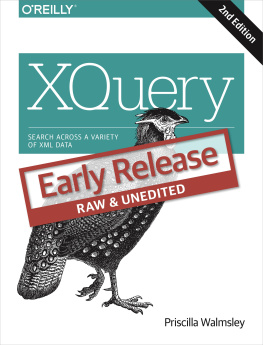
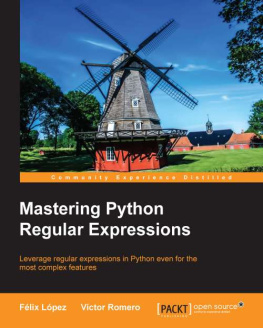
![Retter Adam - EXist: [a NoSQL document database and application platform]](/uploads/posts/book/229210/thumbs/retter-adam-exist-a-nosql-document-database-and.jpg)
